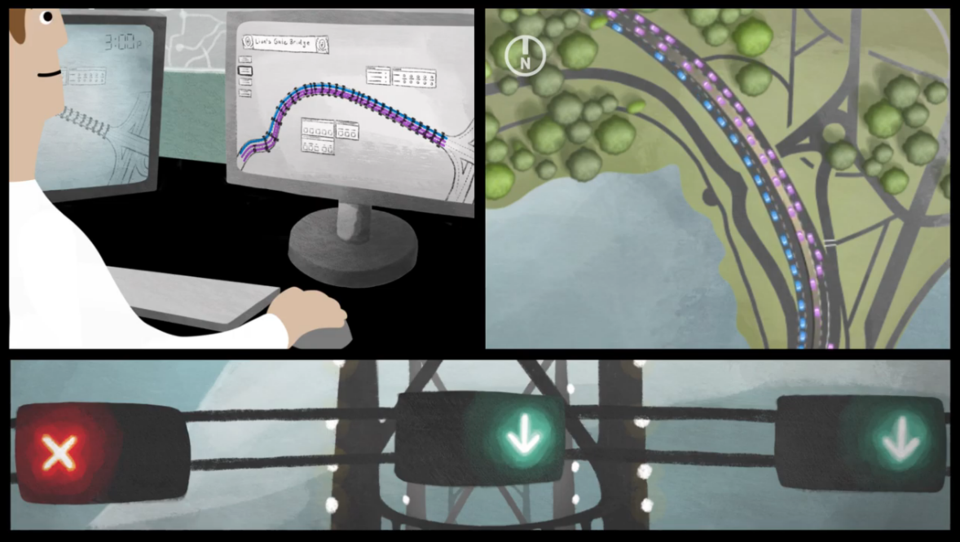If you’ve ever been stuck on the Lions Gate Bridge, thinking the lane control system is working against you while muttering to yourself that the centre lane never switches your way, you’re probably not alone.
But, there’s actually a pretty thorough system in place to keep things running as smoothly and safely as possible on the bridge.
A couple of years ago, the Ministry of Transportation and Infrastructure released a short animation to help ease drivers’ frustrations and give a little insight into how counterflow works.
Firstly, there are more than 40 cameras on the bridge and surrounding roads being monitored around the clock by Miller Capilano Highway Services traffic control operators, TranBC’s local maintenance contractor, from the Transportation Management Centre of British Columbia.
The team there manages the lane operations, while two crew members are also stationed at either side of the bridge between 6 a.m. and 10 p.m., to help clear vehicle incidents and to support emergency services when needed.
So, now to the big mystery … counterflow timing.
The weekday morning commute
During the weekday morning commute, changes to the bridge lanes work in tandem with changes to lanes in the City of Vancouver.
“At 6 a.m., we provide two lanes southbound on the Lions Gate Bridge for morning commuters. At the same time, the City of Vancouver provides an extra southbound lane on Georgia Street to help with the flow of traffic,” says TranBC.
“With a quiet and less congested downtown, southbound commuters can flow steadily over the bridge and continuously into the city.”
After the morning rush, around 9:30 a.m., the city removes the extra lane on Georgia Street and two lanes open in the northbound direction on the bridge.
On weekday afternoons and evenings
After 9:30 a.m. the lane control operations on the bridge become dynamic, which means the lane operators change the direction of the middle lane based on the traffic volume in either direction.
“After 3 p.m., we generally have the centre lane open in the northbound direction,” says TranBC.
“At the same time, we need to make sure southbound vehicles waiting to get into Vancouver from the North Shore don’t spill onto Highway 1, causing safety issues. And that’s why we dynamically change the direction of the centre lane throughout the day.”
The biggest challenge
One of the biggest priorities for the team is keeping the centre lane from clogging with traffic, so it can be cleared quickly when emergency vehicles need to cross.
But some scenarios make this challenging.
Tran BC says when two lanes are provided for northbound traffic, the North Shore can easily disperse commuters with two separate major routes and Highway 1.
But, for the rest of the day and into the evening, southbound traffic faces a busy downtown Vancouver with traffic lights, pedestrians and overall congestion.
The city congestion slows down traffic from Denman Street through Stanley Park Causeway and onto the bridge, quickly clogging the centre lane.
TranBC says the centre lane is the fastest and safest way for first responders to get across, and that's why traffic operators monitor and change the direction of traffic as soon as it starts to slow down, making sure the centre lane is never too clogged.
Overnight on weekdays, from 12 a.m. to 6 a.m., the centre lane of the bridge is closed so emergency services can easily cross the bridge.
On the weekend
On the weekend, the lane control operations are managed dynamically throughout the day and evening.
“Operators change the lanes based on volume in either direction, making sure the centre lane is never too clogged and ready when it matters most,” says TranBC.
And that’s that.
Watch the animation video.



